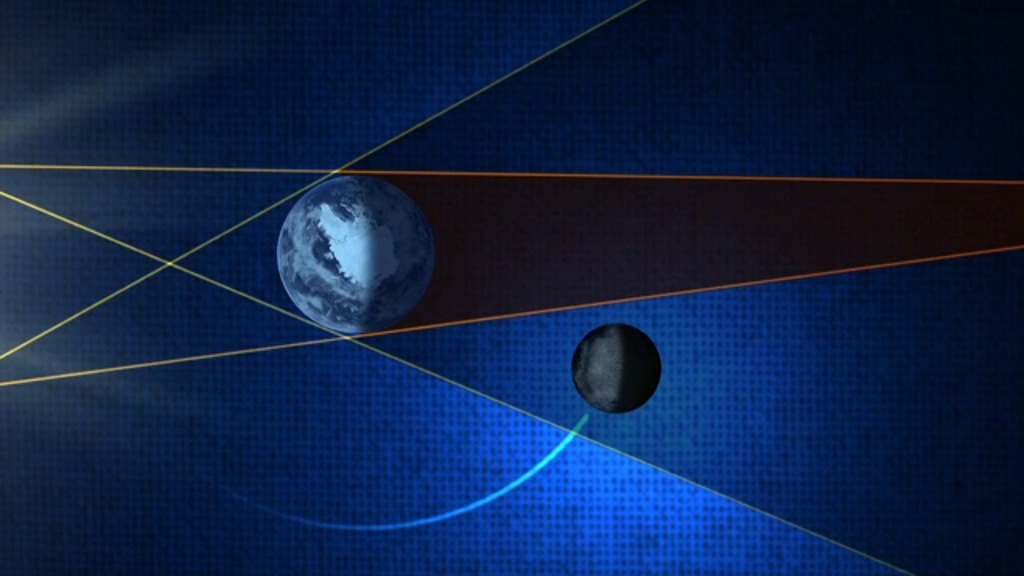Understanding Lunar Eclipses

Find out why the moon occasionally changes color.
On April 4, 2015, skywatchers in parts of North America, South America, Asia and Australia will have a chance to see a total lunar eclipse. A total lunar eclipse occurs when the moon enters Earth’s shadow and becomes illuminated by filtered sunlight passing through the planet's atmosphere. The light casts a warm glow on the moon's disk, causing it to temporarily appear orange or red. The duration of a total eclipse varies depending on how long the moon is shaded by Earth’s central shadow, called the umbra. The eclipse on April 4 will be quite short, lasting less than five minutes. But on September 28, 2015, the date of the next eclipse, the event will last over an hour. Watch the video to learn more.
Learn more about lunar eclipses and why they occur in this video.

This image shows the extent of Earth's central shadow, the umbra, and extended shadow, the penumbra.

The moon dims slightly as it passes through Earth’s extended shadow, the penumbra, where direct light from the sun is partially blocked.

Within Earth’s central shadow, the umbra, direct light from the sun is blocked fully and the moon appears to turn orange or red.

The temporary change in color is the result of filtered sunlight passing through Earth’s atmosphere and reflecting off the moon's surface.
Credits
Please give credit for this item to:
NASA's Goddard Space Flight Center
-
Animators
- Chris Smith (Self)
- Ernie Wright (USRA)
-
Video editor
- Chris Smith (Self)
-
Narrator
- Chris Smith (Self)
-
Narration
- Chris Smith (Self)
-
Producer
- Chris Smith (Self)
-
Scientist
- Richard Vondrak (NASA/GSFC)
-
Writer
- Kayvon Sharghi (USRA)
Release date
This page was originally published on Thursday, April 2, 2015.
This page was last updated on Wednesday, May 3, 2023 at 1:49 PM EDT.
